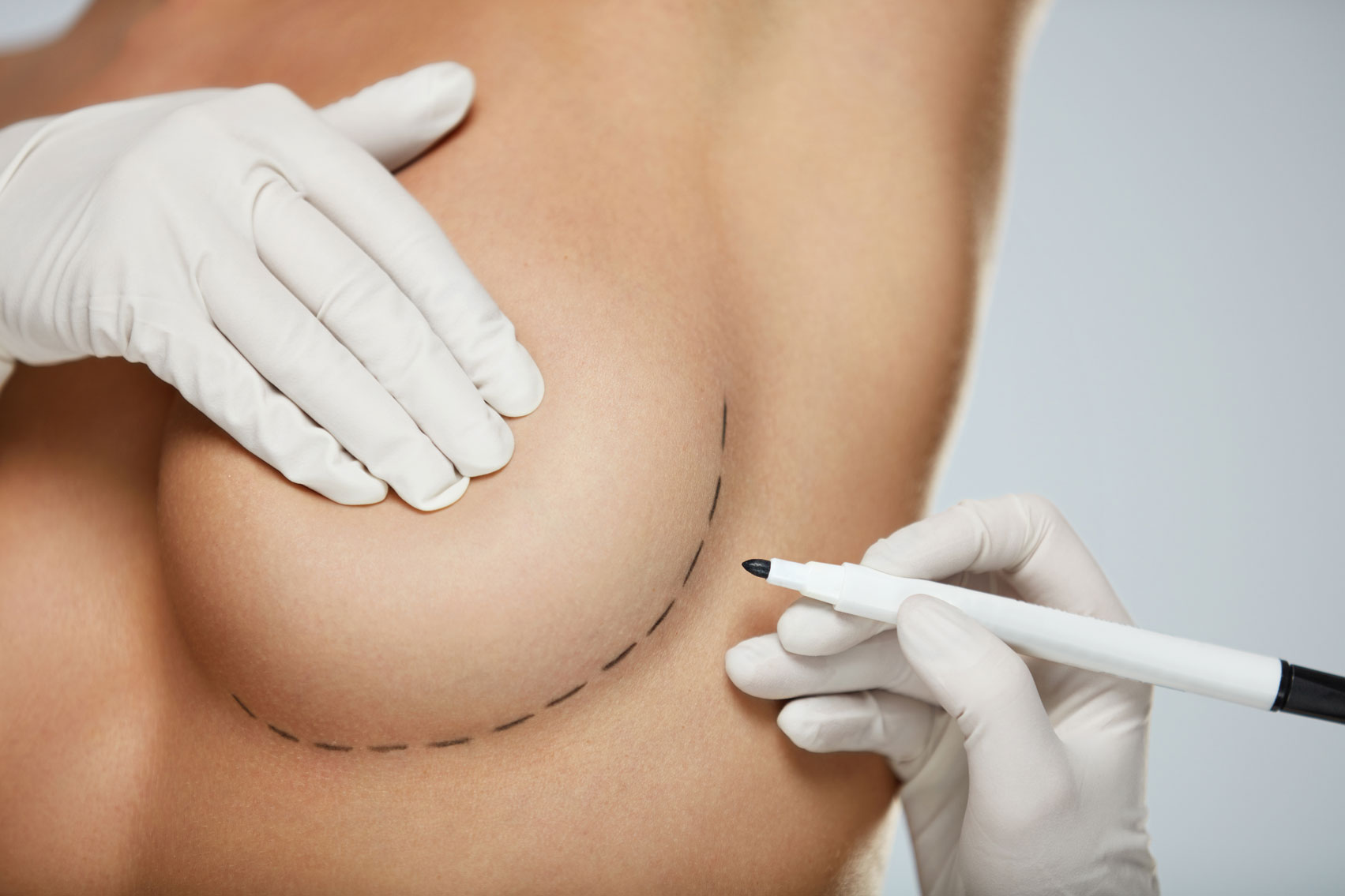
Breast augmentation (breast implants)
Breast augmentation is a form of cosmetic surgery that may change a woman’s appearance by giving her larger breasts, or reconstruct the breast after mastectomy. It is sometimes called a breast enlargement, breast reconstruction or breast implant procedure.
Some women have breast implants as part of reconstruction after breast cancer surgery. If this applies to you, please find further information about breast reconstruction on the Breast Cancer Network Australia website. This article concentrates on surgery for cosmetic reasons.
The Therapeutic Goods Administration (TGA) cancels suspended breast implants available in the Australian market.
In September 2019, the TGA decided to recall and suspend a number of breast implants and tissue expanders due to a small risk of breast implant-associated anaplastic large cell lymphoma.
Following a review, the TGA cancelled three suspended breast implants from the Australian market. The list of these products Consumer information on the recall and risks.
If you have symptoms such as pain, swelling, a rash or a lump in your breast, armpit or elsewhere or you are concerned about changes in your breast, please discuss these with your doctor (GP), surgeon or other appropriate medical professional as soon as possible.
For more information and the latest updates, see the TGA’s online breast implant hub.
What is breast augmentation?
A breast augmentation involves placing implants made of a silicone shell filled with either saline (salty water) or silicone gel under the breasts or under the breast muscles on the chest.
Women have a breast augmentation for many reasons, but these reasons are generally around wanting to feel more physically attractive or to feel better about themselves.

What should I consider in relation to a breast augmentation?
It is recognised that society places a great deal of pressure on women to have a certain body shape. Breast augmentation may not be the solution for everyone, and there are alternatives.
If you are concerned about your appearance, getting advice about exercise and diet might help. If you feel inferior because you believe you have small breasts, counselling might help you accept your body shape. Some women have found that wearing a padded bra has improved how they feel about the way they look.
Some cosmetic surgeons offer fat grafting, where fat is transferred from elsewhere (such as your buttocks) to your breasts. Other types of surgery that do not involve implants are also available.
The cosmetic result obtained from fat grafting is less certain than with implants, partly because it is not known how long the fat will last.
You should also be aware that:
- Generally, Medicare does not cover the cost of cosmetic surgery, and often private health insurance does not either. Before considering undergoing cosmetic surgery, discuss any costs with your treating doctor and, if appropriate, your private health insurance provider.
- It is not clear how long your implants will last — some women need them replaced within 10 years and others within 20 years.
How do I choose a surgeon?
If you are considering breast augmentation, it is important to choose a surgeon you feel comfortable with, and who will speak to you honestly about the benefits and risks of any surgery.
The Australian Health Practitioner Regulation Agency (AHPRA) has a register of medical practitioners. You can check this register to ensure your surgeon is a Fellow of the Royal Australasian College of Surgeons (RACS). You can also check if the surgeon has had any serious disciplinary action taken against them.
What questions should I ask before surgery?
There is a lot to consider before deciding to have cosmetic surgery. You can ask your doctor questions about surgery in general, and there are others you could ask your doctor about breast augmentation, such as:
- What type of breast implants do you recommend for me and why?
- Will I lose any sensation after having implants?
- Can I breastfeed in future?
- How will the surgery change the position and appearance of my nipples?
- How much bruising, swelling, or pain would you expect me to experience? What should I do about this?
- How long until I can return to my normal activities after surgery?
- How many times have you performed this procedure, and how often do you do it?
- How many of your patients have had a ruptured or failed implant? What will it mean for me if this happens?
- How likely am I to need further operations because of problems?
- How long will the implants last?
- If I need further surgery due to complications or if I am not satisfied with the result, will there be extra costs?
How do I prepare for a breast augmentation?
If you decide to go ahead, get as much information about the procedure as possible and know what results you can expect.
If you smoke, try to quit, as smoking slows down your recovery. You should also check with your doctor if you need to make any changes to any medication you are taking. It is also important to be as fit as possible to help the recovery process.
What happens during a breast augmentation procedure?
You will most likely need a general anaesthetic. The surgeon will make a cut alongside the breast then place the implants between the breast tissue and the muscle, or behind the large chest muscle under the breast.
There are different ways of doing the operation, and they have different effects on your recovery time.
There are also different types of implants. Some women prefer the feel of silicone implants to saline implants. Saline implants cause fewer problems than silicone implants if there is any leaking.
What should I expect after a breast augmentation?
You might be in hospital for a few days — read about what to pack. You might have tubes to drain blood and other fluid away from your chest — if so, these will be in place for a day or two.
You will have swelling and bruising around your chest, which will take a week or two to go down. Unfortunately, you will have pain and discomfort. You may be prescribed pain relief to help.
You will probably need to wear extra support for a few weeks until your breasts heal. It can take this amount of time for you to get back to normal, so expect some time off work and more time when you will need extra help with daily activities.
You will also need to return to the hospital or to see the surgeon to have your stitches taken out. It will probably take several months for all swelling and scars to settle down.
What are the risks of breast augmentation?
Like any surgery, breast implant surgery comes with risks. You should discuss the risks in detail with your surgeon.
You should also discuss the risks of anaesthetic with your anaesthetist. Some of the more common problems that occur in at least 1 in 100 women include:
- bleeding, or a collection of blood (haematoma)
- infection
- changes to sensation of the breast skin or nipple, including numbness
- swelling or collection of fluid around the breast
- injury to surrounding tissue
- rupture
There are other rare but serious risks to consider including:
- an allergic reaction to the anaesthetic
- blood clots in the legs, which can travel to the lungs and cause serious illness
Some women find that after surgery their breasts do not look how they had hoped. Sometimes, breasts can be uneven, dimpled, hardened or feel lumpy. Sometimes, the nipples are uneven and this can cause problems.
The implants can also make it harder to detect breast cancer during screening checks. Some women with breast implants can breastfeed after surgery, but others cannot.
You should consider that you may need another operation. The younger you are, or the longer you have breast implants, the more likely you are to eventually have problems. And if you have them removed but not replaced, your breasts might be scarred and dimpled.
What costs apply to a breast augmentation?
The cost of a breast augmentation varies from patient to patient and includes:
- surgeon’s fees
- anaesthetist’s fees
- clinic or hospital fees
- the implants
- medication, dressings and support garments
You should discuss all fees with your surgeon before the procedure.



